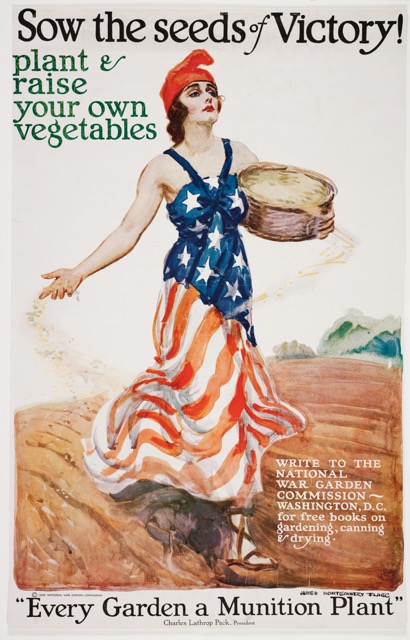
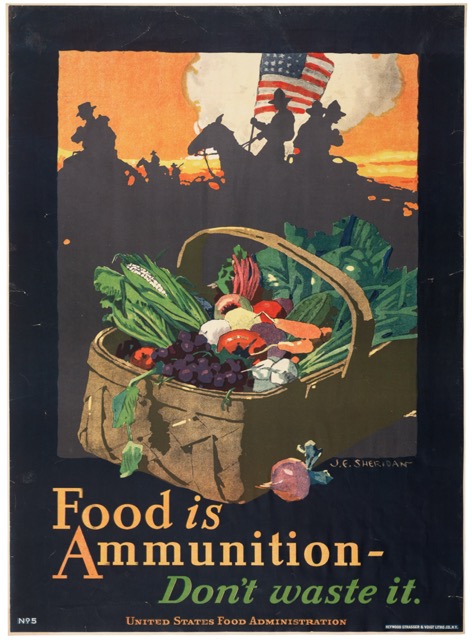
Recipes that accommodate deprivation have many origins. Poverty is one form of deprivation, but you might also face food shortages or ingredient shortages based on season, location or transportation. War is another driver of food shortages. During World War I, much of Europe starved. Food shortages affected civilian morale, but also government stability and the legitimacy of the state.1Davis, Belinda J. Home Fires Burning Food, Politics, and Everyday Life in World War I Berlin. Chapel Hill: University of North Carolina Press, 2000. The U.S. had it much better, but in 1917, the U.S. National Food Administration (NFA) led by Herbert Hoover introduced a rationing program designed to reduce U.S. consumption of certain key goods so they could be shipped to the Allies in Europe.2National Archives. “In Freedom’s Name: Food Conservation Efforts During World War I,” August 15, 2016. https://www.archives.gov/education/lessons/freedom.html. This program was almost entirely voluntary and relied on peer pressure and publicity for enforcement. Domestic scientists like Lilian Tingle were key in developing and promoting the rationing program. Through newspapers, pamphlets, and cooking classes domestic scientists helped spread the word about rationing and cajole, berate, and shame consumers into complying. Women were a main target of the NFA’s campaign because they were seen as responsible for buying and preparing food for their families. As consumers, women had the power to support the war.3Davis, Belinda J. Home Fires Burning., Google Arts & Culture. “The U.S. Food Administration, Women, and the Great War: The Pennsylvania Food Conservation Train – U.S. National Archives.” Accessed January 11, 2022. https://artsandculture.google.com/exhibit/the-u-s-food-administration-women-and-the-great-war-the-pennsylvania-food-conservation-train/ogKSCGsEff-WIg. This was one form of political action available to women, who were still denied the national vote in 1918.

In 1918, Tingle filled her columns with war recipes, helping housewives cope with rationing and giving them ideas for alternative meals. The rations primarily targeted white flour, sugar, butter, meat, and eggs. They were replaced with alternative flours, syrups (like corn syrup), shortening, nuts, and going without. Tingle’s tone in her columns was fiercely patriotic and duty oriented. During the war she relocated to Eugene, OR to teach classes in war rationing and war cooking at the University of Oregon. Hoover himself urged women to attend Tingle’s classes.4Oregon Emerald. “Food Talks Continue,” January 28, 1918. https://oregonnews.uoregon.edu/lccn/2004260238/1918-01-28/ed-1/seq-2/#words=Lilian+Tingle. In her columns, she refused to print recipes that she deemed too indulgent or that used too much of a rationed ingredient, instead filling the columns with substitution recipes, and troubleshooting her correspondents’ questions about substitutions and rationing.
Deprivation Pies:
In March 1918 Mrs. E. H. from Portland asked for a “sugarless lemon pie” recipe. Tingle provided a lemon pie filling recipe, instructing her to use a wheatless pastry shell, or use the filling on fruit salads, sweet sandwiches, or war cakes. The filling used only: one cup of water, 3 tablespoons cornstarch, five tablespoons corn syrup, one tablespoon sugar, one egg, one lemon, and one teaspoon shortening (like Crisco or butter).5Tingle, Lilian. “Answers to Correspondents.” Sunday Oregonian, March 24, 1918, sec. 5. Historic Oregon Newspapers. https://oregonnews.uoregon.edu/lccn/sn83045782/1918-03-24/ed-1/seq-71/ Syrups like corn syrup were a popular sugar substitute because they were not rationed, and were cheaper, and easier to produce.
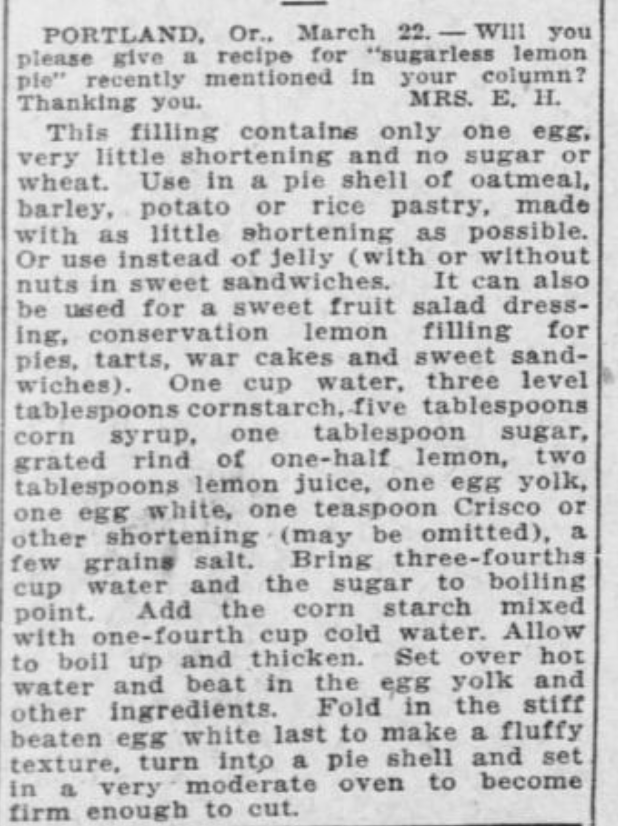
Rationing is only one reason people may experience deprivation. In 1924 Mrs. E.B.B. requested a “water cinnamon pie” recipe using just water, cinnamon, flour/cornstarch and sugar. Tingle responded derisively. She didn’t have a recipe for a pie like that and it sounded “uninteresting” to her.6Lilian Tingle, “Answers to Correspondents,” Sunday Oregonian, September 7, 1924, NewsBank, 25. A few months later, a different correspondent from Eastern Oregon wrote in and provided a water cinnamon pie recipe. Correspondents regularly submitted recipes when Tingle didn’t have one, creating the feeling of a reciprocal community of home cooks. The Eastern Oregonian correspondent included some comments with her recipe chastising Tingle for calling the pie uninteresting, “just ask my small children if ‘sugar pie’ is uninteresting.” It was a family recipe and very popular in her house. Tingle thanked her for the recipe but wrote,“I stick to my opinion. Children are poor judges of food, though I have known parents who consulted them as if their opinions and tastes were necessarily the “last word” in nutrition and gastronomy. Even though they enjoy the pie you describe it is not particularly good for them.”7Lilian Tingle, “Answers to Correspondents,” Sunday Oregonian, November 16, 1924, NewsBank, 83. While sugar pie probably isn’t “particularly good” for anyone, I’d argue that neither her lemon pie nor the Brother Killer fruitcake I made last week could be described as health food. They’re dessert recipes.
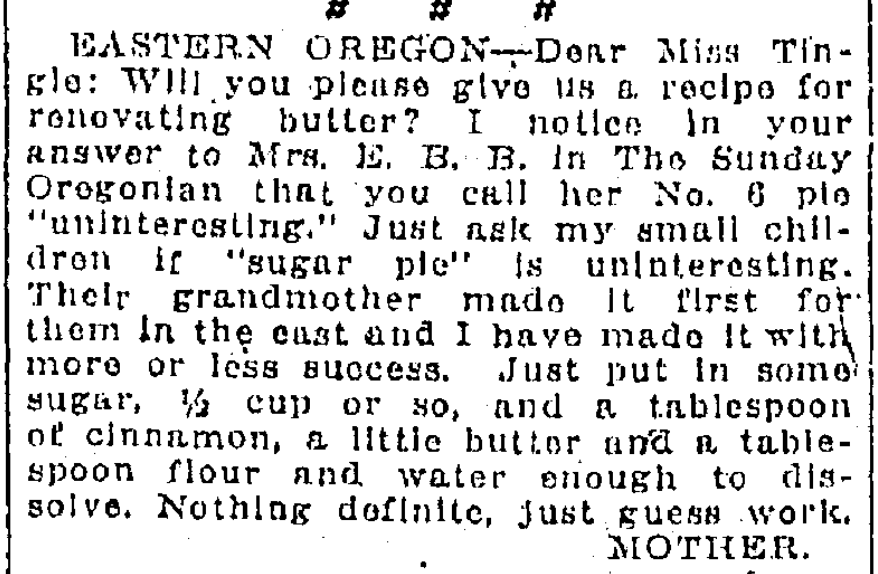
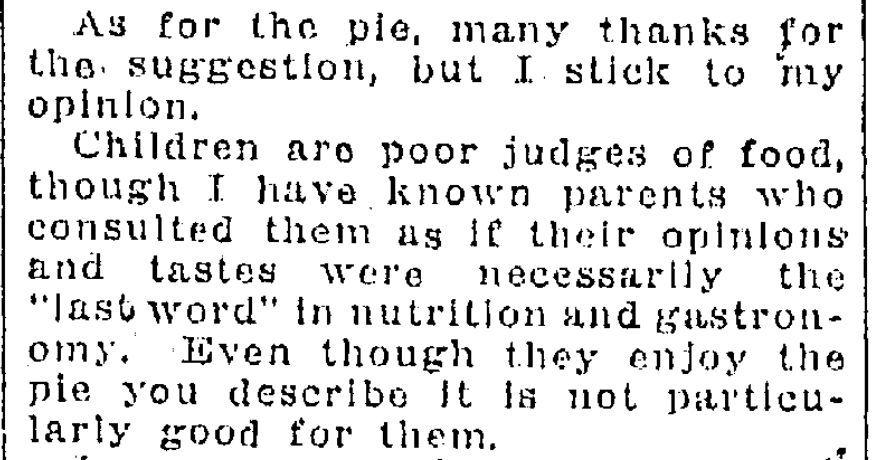
Crucially, water pies are a traditional deprivation pie, especially on farms. They use cheap ingredients that are always available. In fact, the water cinnamon pie and the sugarless lemon pie have nearly identical ingredient lists. The only deviation is cinnamon instead of lemon and the addition of an egg in the lemon pie. The real difference was in Tingle’s attitude toward the pies, and the context of deprivation. During the war, Tingle enthusiastically embraced voluntary deprivation and the creative cooking solutions it required. And while she was often cognizant of thriftiness and food prices in her columns, she clearly didn’t extend that consciousness to the cinnamon water pie. Neither correspondent explicitly said that they made the pie when they didn’t have access to other ingredients, but these pies originate from deprivation conditions, and Tingle seemingly never considered that a correspondent might have a need for a water pie in a context outside of war.
Making the Pies:
The first step to a good pie: a good pie crust. Unfortunately the pie crust I chose was a no-wheat, (almost) no-fat crust. All you need is two cups of finely ground oats and a cup of boiling water. I used a blender to grind my oats because the recipe didn’t specify a method and I just really didn’t want to hand-grind oats. The crust was very easy to make, as soon as the hot water touched the ground oats the overwhelming bland scent of oatmeal filled the kitchen. After a couple minutes of stirring and kneading, the crust came together and it was easy to roll out. Since there is no gluten in oats, you can knead the crust as much as you want without it getting tough like a wheat pie dough. Unfortunately, the oat crust comes with bigger issues. After rolling it out, my friend Max (who helped me cook this week) and I transferred the crust to a pie plate and rerolled the scraps to fill two miniature tart pans. Instead of making two full sized pies we decided to make one large lemon pie and fill the tiny tart pans with water cinnamon pie filling. The recipe did not include a baking temperature, just “a hot oven” so I decided that 400 was about right and we put the crusts in to blind bake. Sadly, they shrank and cracked a bit in the oven but overall they came out alright, and the oatmeal smell dissipated as they cooked.
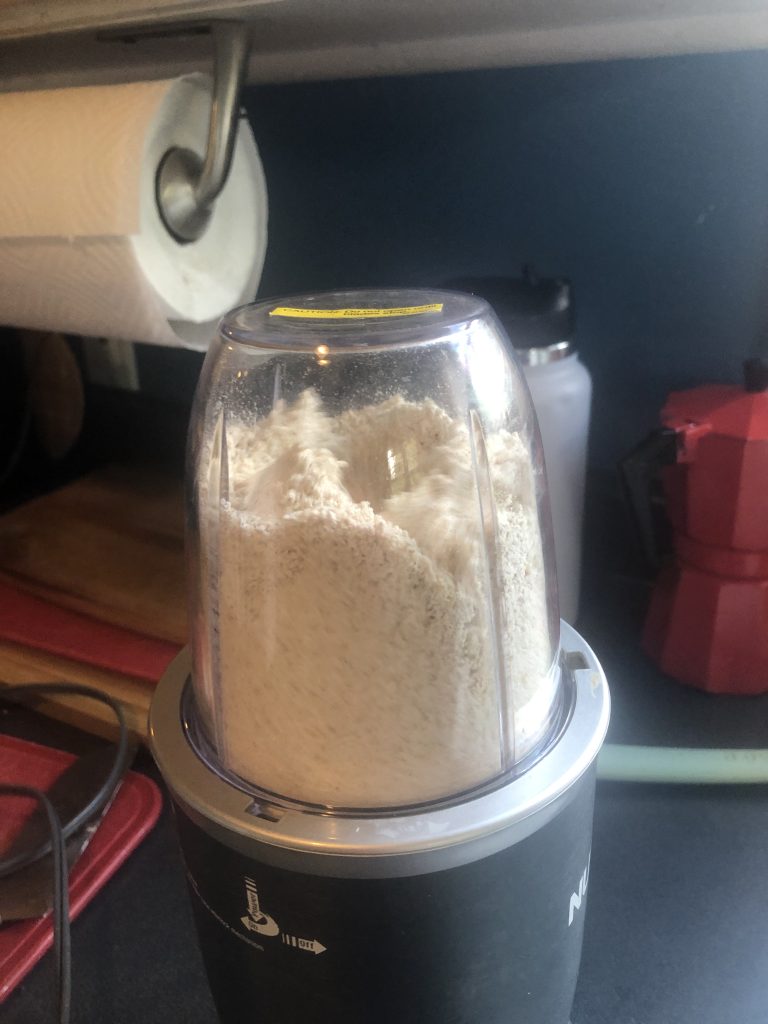
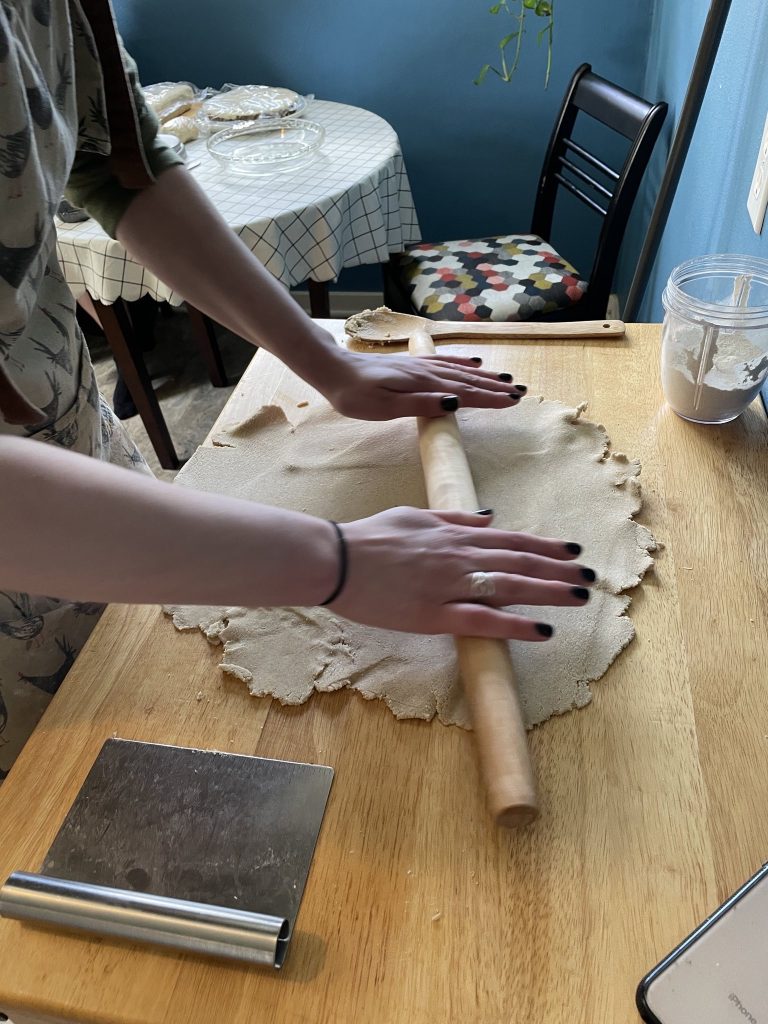

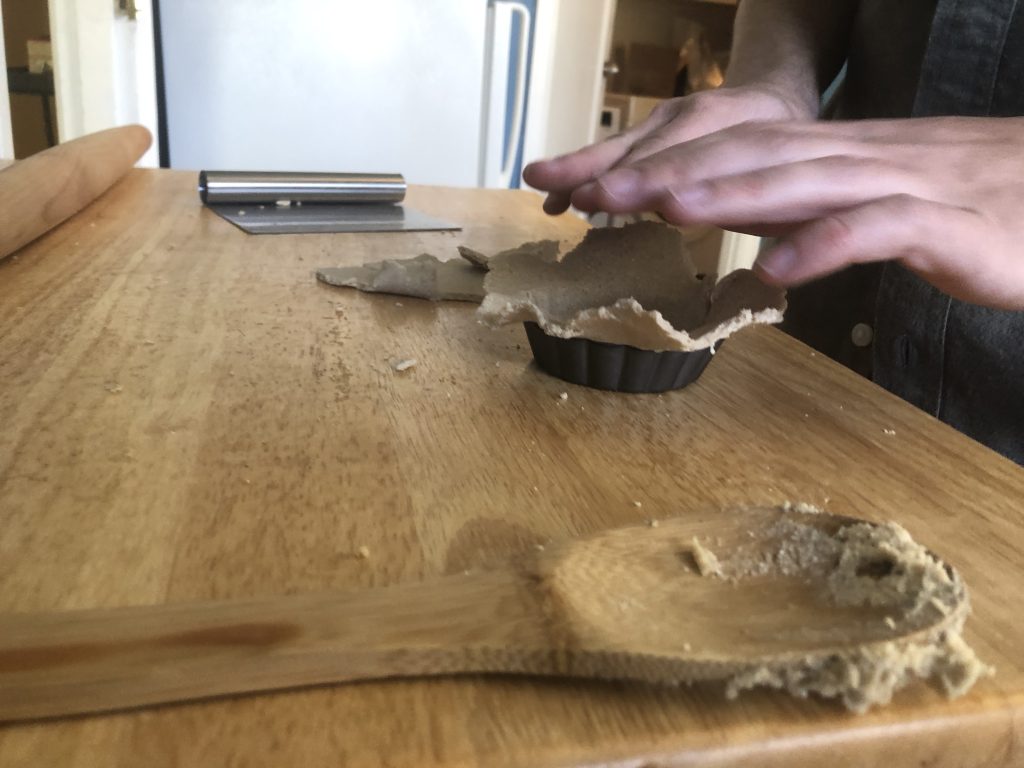
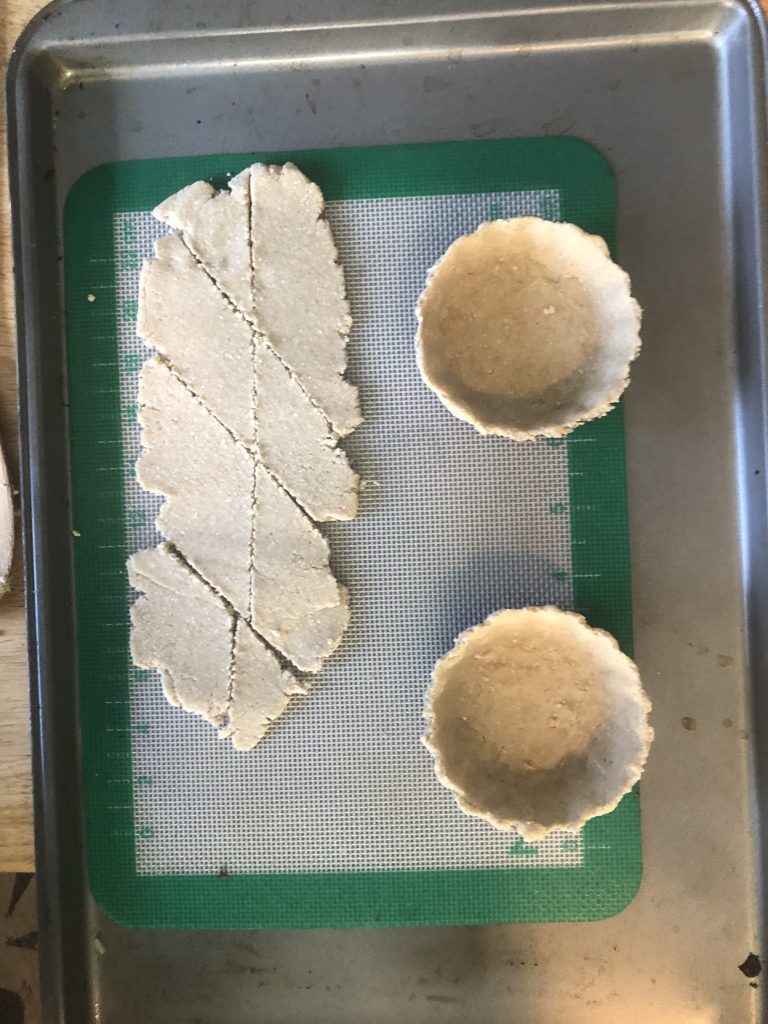

The filling was also very easy to make. For the lemon pie we just cooked the water, sugar, corn syrup and cornstarch until it thickened into an epoxy-like gel, then added the lemon juice and zest and the egg yolk. Max and I took turns hand beating the egg white until we got stiff peaks, then folded the egg white into the lemon mixture. We were left with a pleasant smelling lemon foam, that…didn’t quite fill our overly ambitious pie shell. The water cinnamon pie was even easier, there were no cooking instructions but we decided to cook the filling like the lemon pie to thicken it, then add the cinnamon and bake. The recipe called for a full Tablespoon of cinnamon which seemed extreme, once we added it, the mixture looked like a dark caramel. It turned out to be a good choice to make tiny water cinnamon pies, because the recipe only made enough filling for about two and a half mini pies. We baked all the pies at 250 F for about 20 minutes until they were mostly set. Then all that was left was convincing people to eat them!
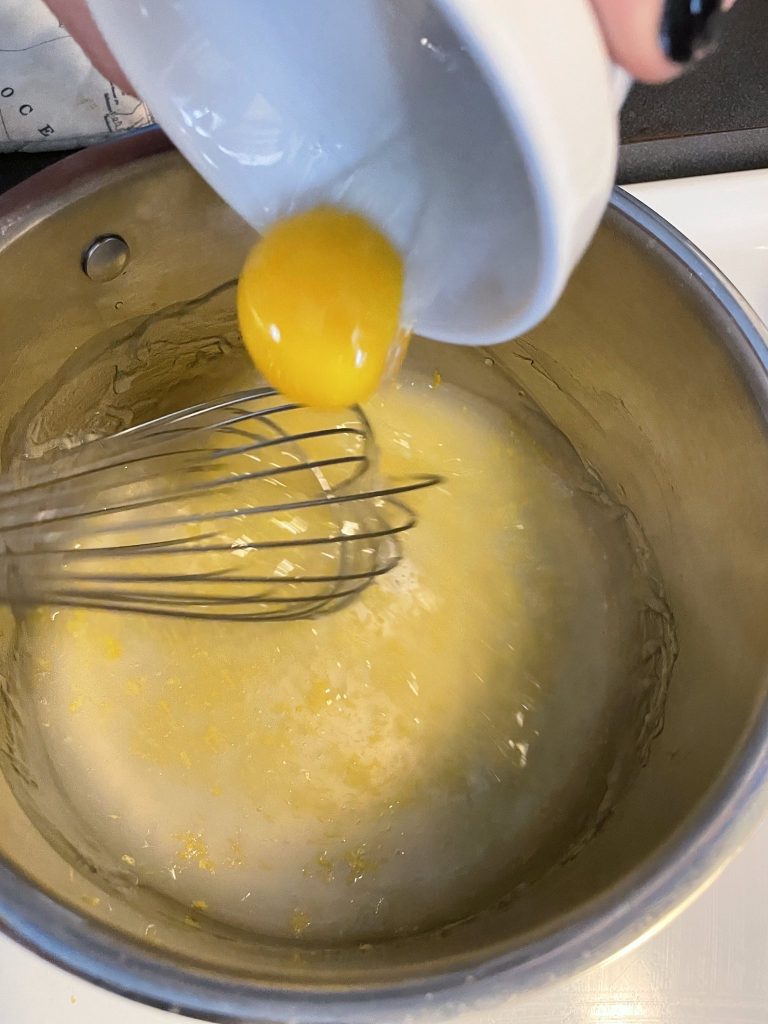
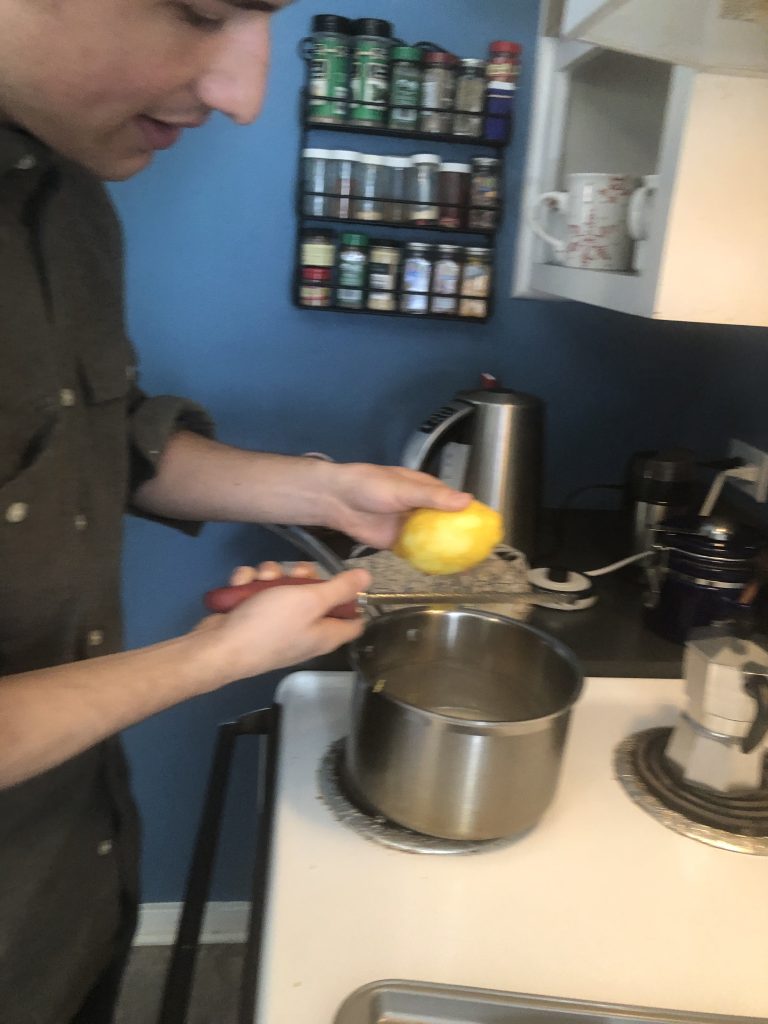
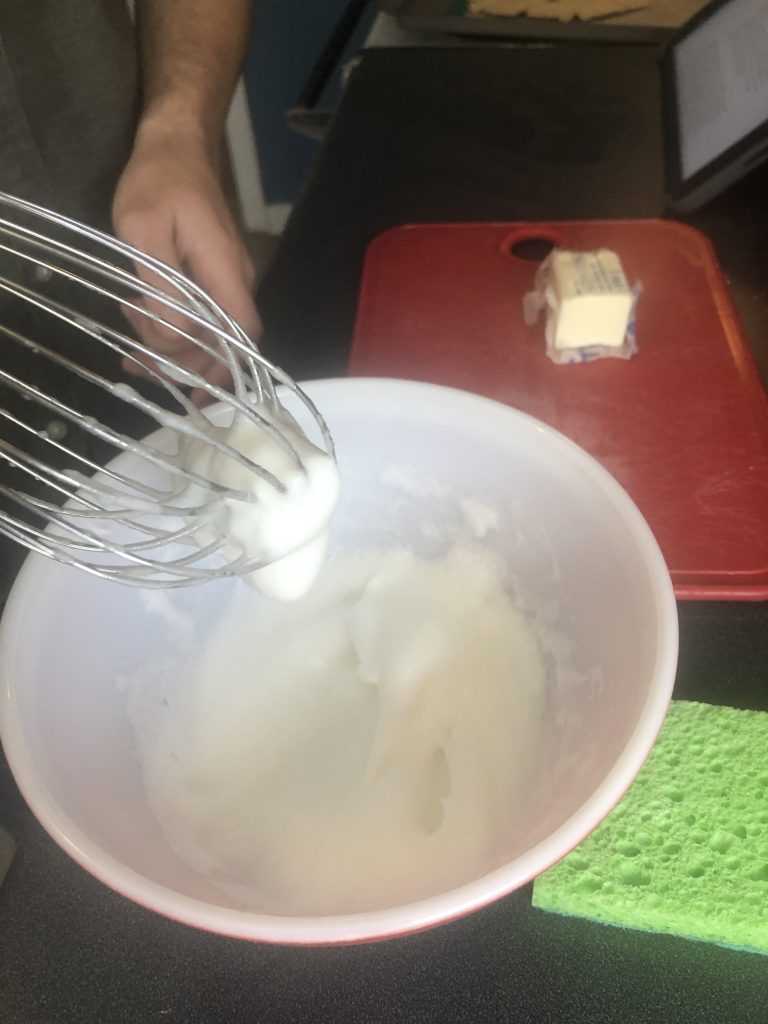
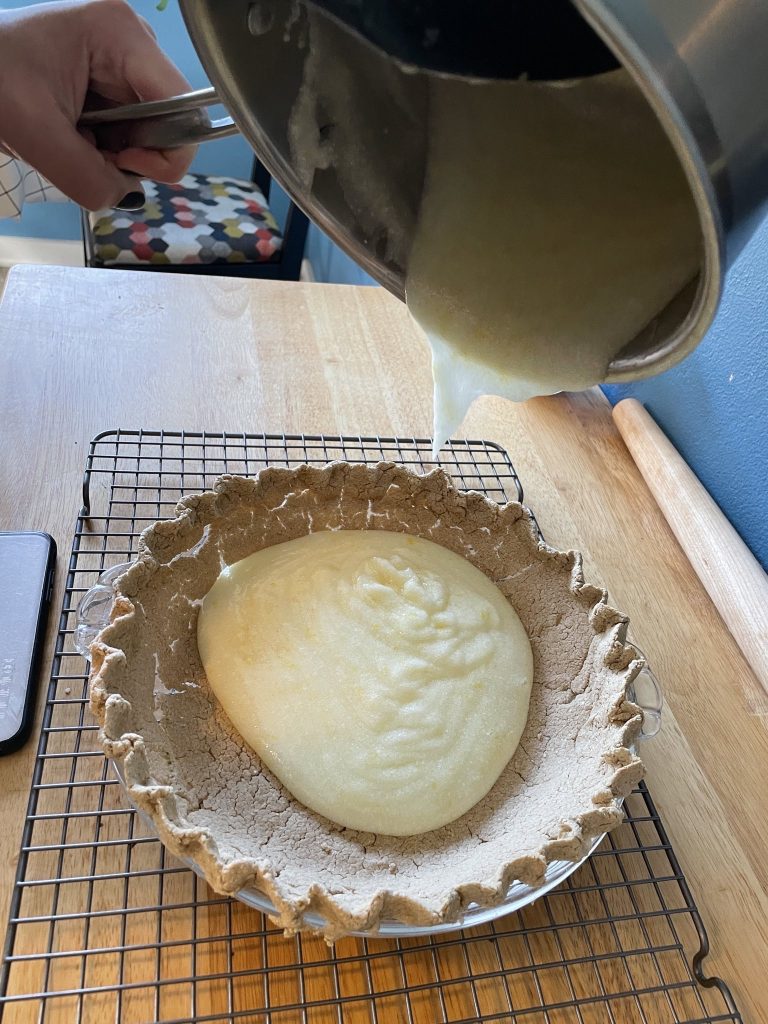
The promise of fruit cake (from last week’s post) had lured 12 unsuspecting friends to my house. So after softening them up with the fruit cake, I brought out the deprivation pies. The reception was mostly positive, at least to the fillings. The oat crust was not a winner. It did have one fan though, who said, “it’s yummy in a communion wafer way.” Others were not so kind, saying “it’s like cereal that was wet and is now dry cement,” “it hurts to swallow and I can still feel it in my throat,” “I mean…I didn’t like it.” The fillings went over much better. Everyone agreed that the lemon filling was pretty good and would have been fine in another crust. The cinnamon filling mostly tasted like sweet cinnamon toast syrup. It was good, but a full pie slice of it would have been impossible to eat. Even with thirteen people in attendance, we did not finish the pies, but we got close!
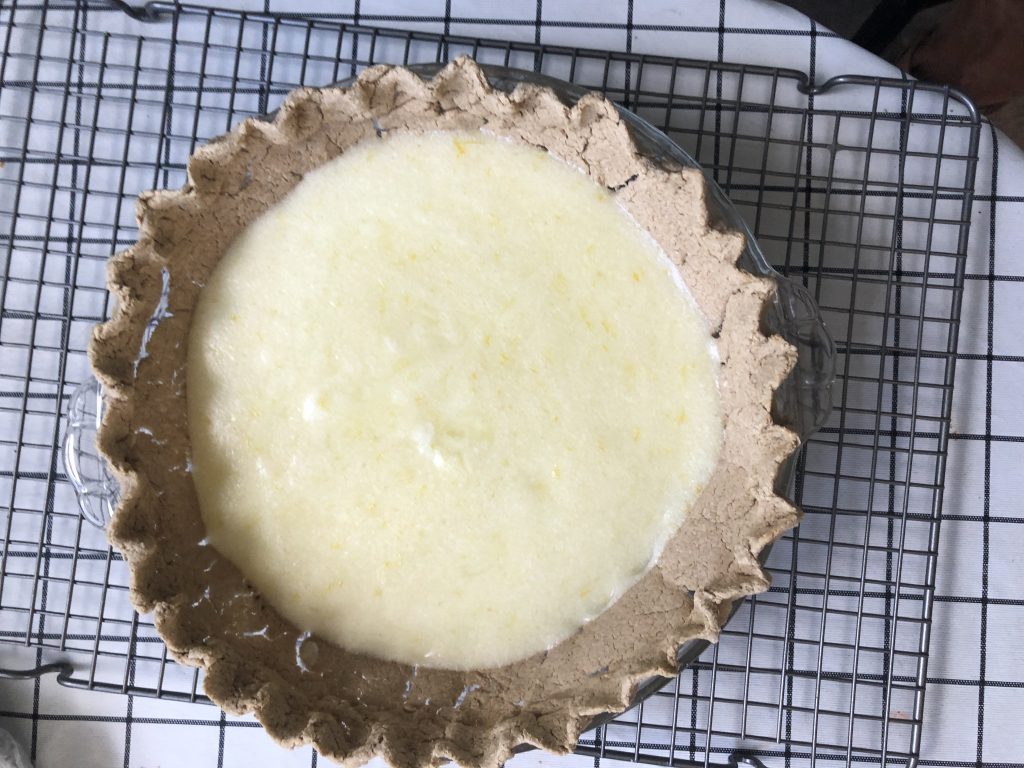
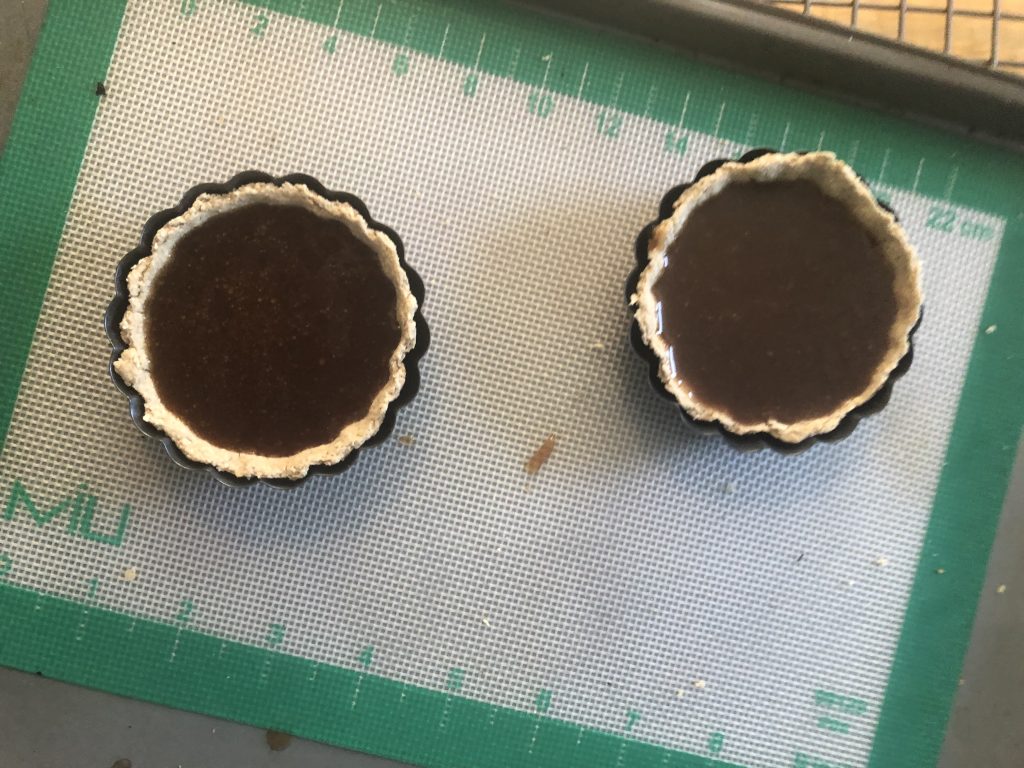
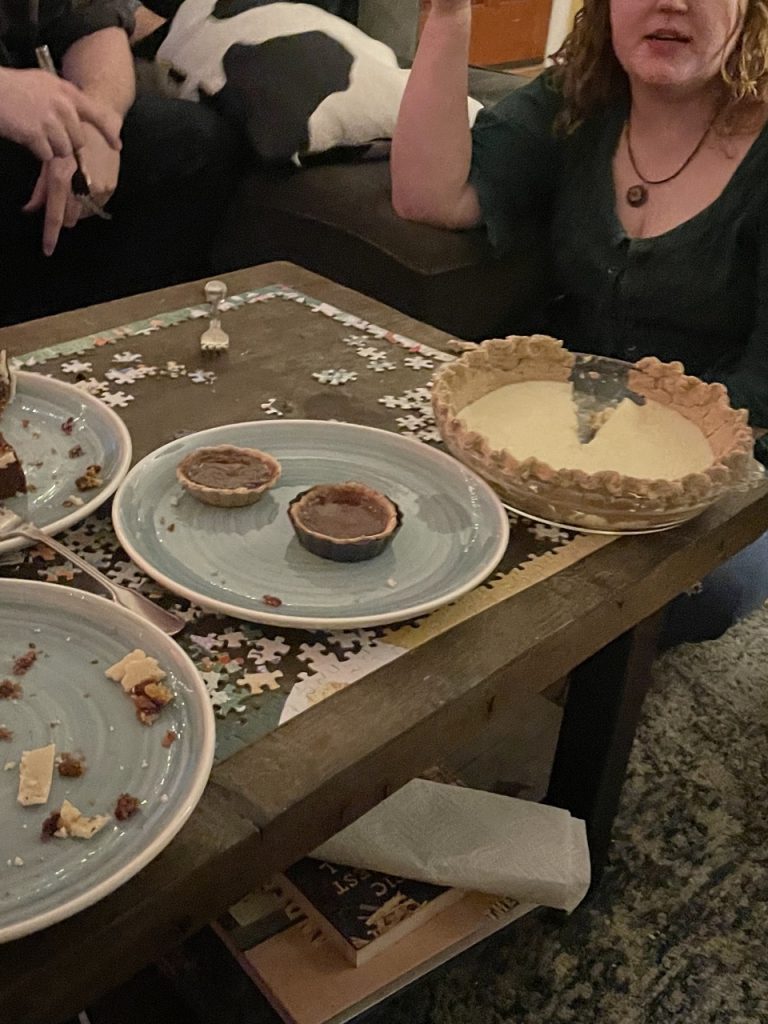
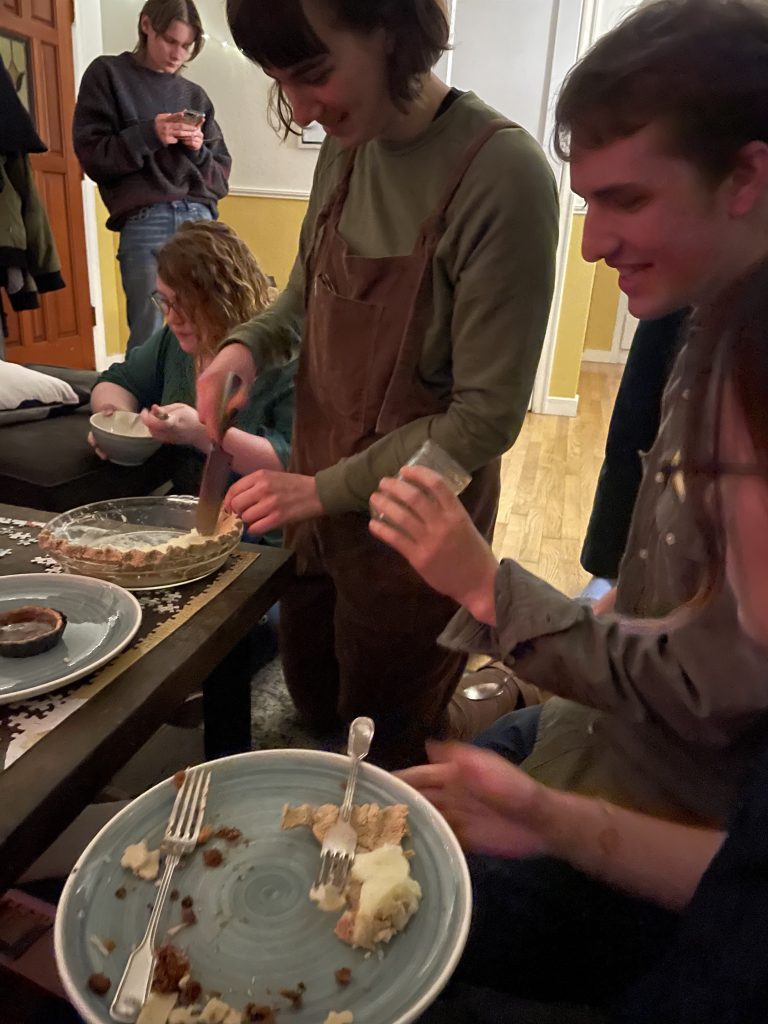
Deprivation cooking is just as necessary now as it was when Tingle was writing her column. War, displacement, poverty, location, and inflation continue to impact how people cook and eat. And food content creators continue to exist in tension with deprivation cooking. Some creators tailor their content to people living on a tight food budget, helping them find creative solutions and feed their families, and profiting off of their need. Other creators don’t think about class or access, writing recipes that are out of reach for large swathes of their audience, either because of price or the inaccessibility of their ingredients. Class, location, politics, and geopolitics have always been intimately connected to food, not just in theory, but in daily practice. In the groceries we buy, the meals we cook, and the ways we think about food.
Notes
Special thanks to Max, Audra, Haley and Kira for providing photos, and Anna, Paulina, Colin, Witch Hazel, Jared, Veronica, Laura and Tess for their willingness to be tasters. Laura, Paulina, Colin and Witch Hazel are quoted above.
For references, click on in-text footnotes. Or visit this page for a full bibliography.